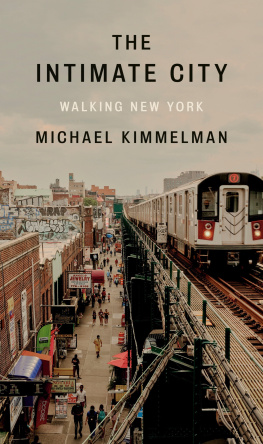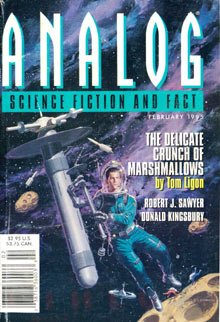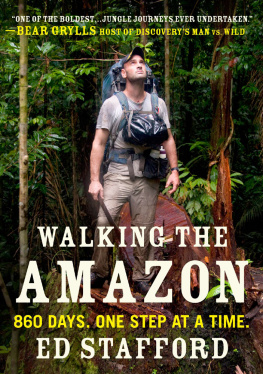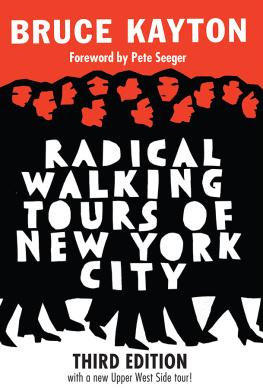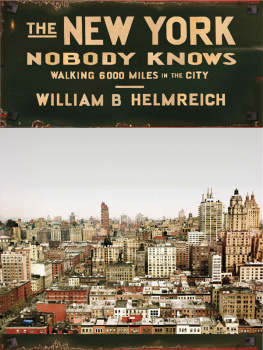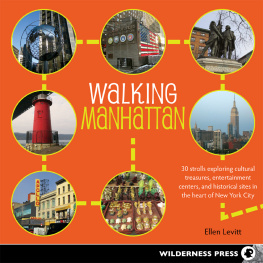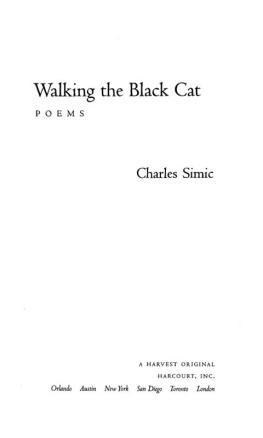Michael Kimmelman - The Intimate City: Walking New York : Walking New York
Here you can read online Michael Kimmelman - The Intimate City: Walking New York : Walking New York full text of the book (entire story) in english for free. Download pdf and epub, get meaning, cover and reviews about this ebook. year: 2022, publisher: Penguin Publishing Group, genre: Art. Description of the work, (preface) as well as reviews are available. Best literature library LitArk.com created for fans of good reading and offers a wide selection of genres:
Romance novel
Science fiction
Adventure
Detective
Science
History
Home and family
Prose
Art
Politics
Computer
Non-fiction
Religion
Business
Children
Humor
Choose a favorite category and find really read worthwhile books. Enjoy immersion in the world of imagination, feel the emotions of the characters or learn something new for yourself, make an fascinating discovery.
- Book:The Intimate City: Walking New York : Walking New York
- Author:
- Publisher:Penguin Publishing Group
- Genre:
- Year:2022
- Rating:3 / 5
- Favourites:Add to favourites
- Your mark:
- 60
- 1
- 2
- 3
- 4
- 5
The Intimate City: Walking New York : Walking New York: summary, description and annotation
We offer to read an annotation, description, summary or preface (depends on what the author of the book "The Intimate City: Walking New York : Walking New York" wrote himself). If you haven't found the necessary information about the book — write in the comments, we will try to find it.
The Intimate City: Walking New York : Walking New York — read online for free the complete book (whole text) full work
Below is the text of the book, divided by pages. System saving the place of the last page read, allows you to conveniently read the book "The Intimate City: Walking New York : Walking New York" online for free, without having to search again every time where you left off. Put a bookmark, and you can go to the page where you finished reading at any time.
Font size:
Interval:
Bookmark:

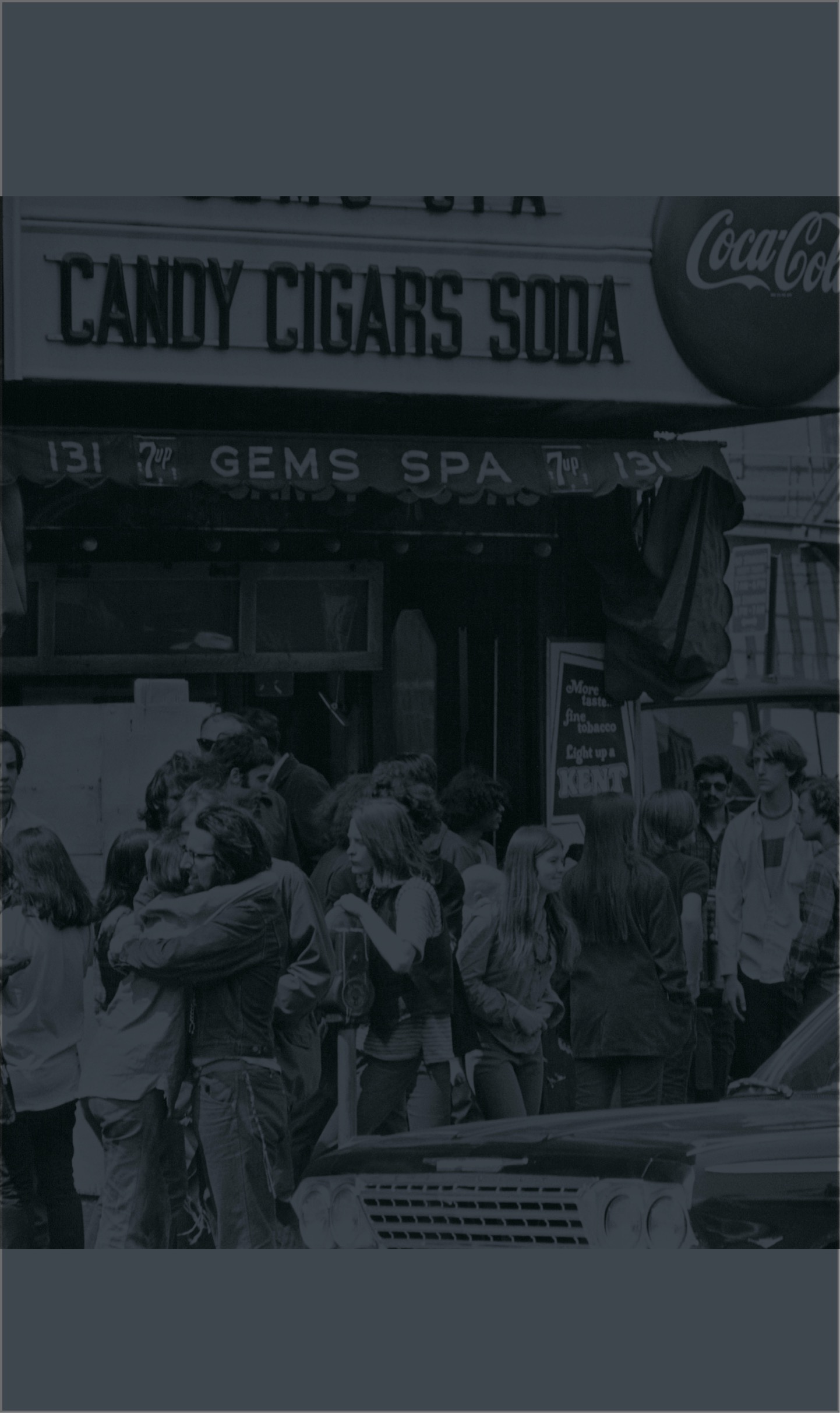
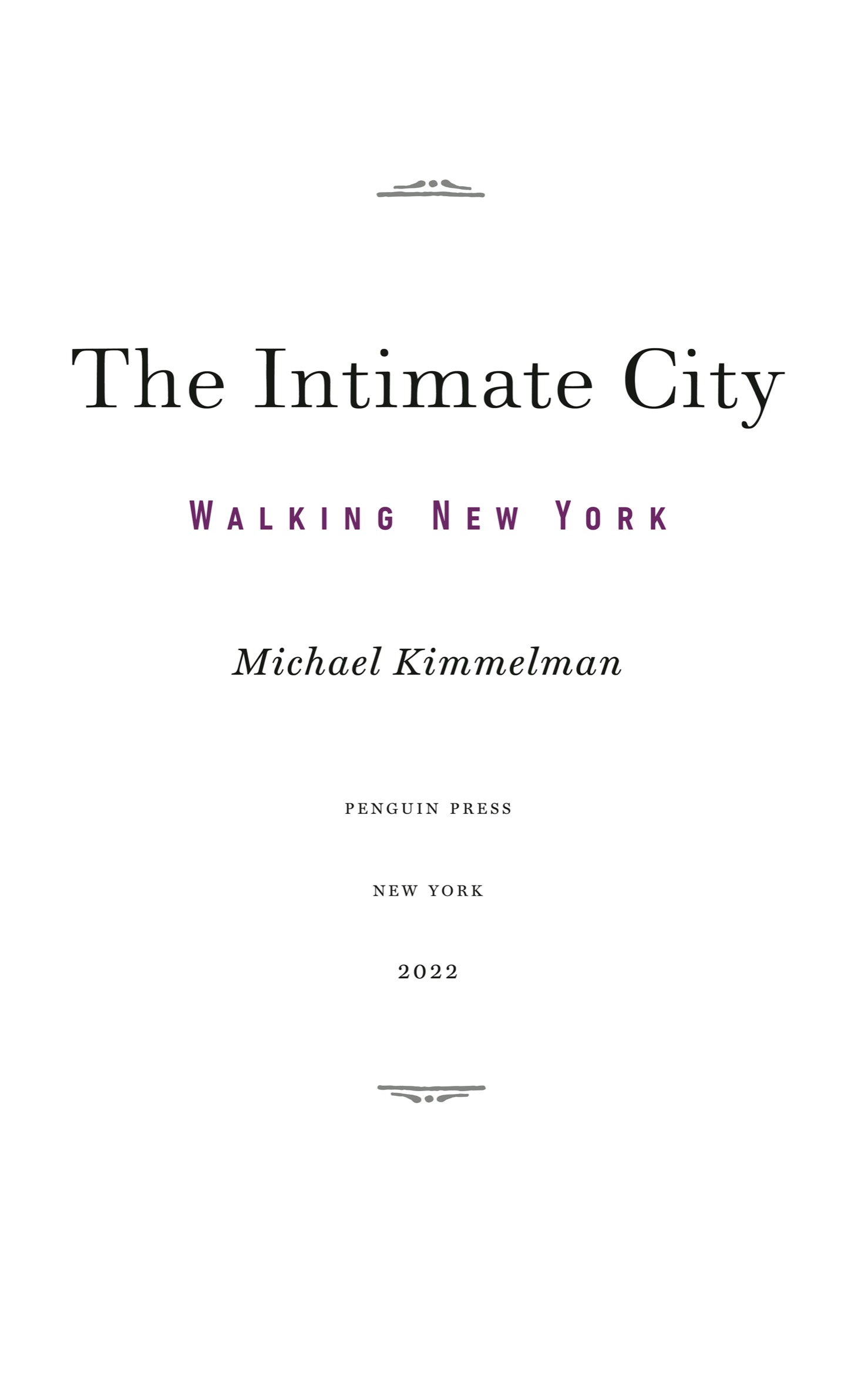
Penguin Press
An imprint of Penguin Random House LLC
penguinrandomhouse.com
Copyright 2022 by Michael Kimmelman
Penguin Random House supports copyright. Copyright fuels creativity, encourages diverse voices, promotes free speech, and creates a vibrant culture. Thank you for buying an authorized edition of this book and for complying with copyright laws by not reproducing, scanning, or distributing any part of it in any form without permission. You are supporting writers and allowing Penguin Random House to continue to publish books for every reader.
constitutes an extension of this copyright page.
Image credits appear on .
library of congress cataloging-in-publication data
Names: Kimmelman, Michael, author.
Title: The intimate city : walking New York / Michael Kimmelman.
Description: New York : Penguin Press, [2022]
Identifiers: LCCN 2022002078 (print) | LCCN 2022002079 (ebook) | ISBN 9780593298411 (hardcover) | ISBN 9780593298428 (ebook)
Subjects: LCSH: New York (N.Y.)Guidebooks. | WalkingNew York (State)New YorkGuidebooks. | COVID-19 (Disease)New York (State)New YorkHistoryPictorial works.
Classification: LCC F128.18 .K15 2022 (print) | LCC F128.18 (ebook) | DDC 917.47/1044dc23/eng/20220119
LC record available at https://lccn.loc.gov/2022002078
LC ebook record available at https://lccn.loc.gov/2022002079
Cover design: Stephanie Ross
Cover photograph: Victor Llorente / The New York Times / Redux
Designed by Claire Vaccaro, adapted for ebook by Cora Wigen
pid_prh_6.0_141966099_c0_r0
To Maria, to Harry, and to Gabriel
This book started with an email I sent at 1:32 p.m. on March 13, 2020. New York had confirmed its first cases of what would be the worst public health crisis in a century; museums and Broadway theaters had closed their doors, and Governor Andrew Cuomo had declared a state of emergency. I wrote to several architects, writers, planners, and friends:
With everything shuttering and people increasingly likely to feel stir crazy at home, Im thinking of doing a modest series for The Times: architectural walks around the city, in which I am taken on these tours by different people. The goal is obviousdistraction, joy, consolation. People can still go outside, after all; getting out is healthy, and we can get to see other people that wayas well as see that were not alone, see examples of how the city remains beautiful, inspiring, uplifting.
This isnt anything new or difficult. Ive been thinking about the noon concerts at the National Gallery in London during the blitz....
These would be brief tours and my companions could be architects, historians, preservationistsanyone interesting and interested.
That includes you.
Any thoughts? Feel like taking a walk?
With the outbreak of World War II, the British Home Office had ordered theaters, music halls, movie houses, and many other public gathering spots in London shut, leaving residents to meditate on their grim fate at home. Kenneth Clark, the director of the National Gallery, who had evacuated the collection from the building to Wales, arranged with museum trustees and government authorities to keep one painting on public view (the picture was changed once a month, so people had reason to return). And Clark also got permission for the gallery to organize a series of classical music concerts (at one p.m., to be precise, with repeat performances later in the afternoon). This is the period when people are beginning to feel the want of nourishment for mind and spirit, he argued to the authorities at the Home Office and Ministry of Works.
The pianist Myra Hess had come up with the idea and gave the first concert herself on October 10, 1939, under a domed skylight in an octagonal room at the gallery outfitted with several dozen chairs and a small wooden platform. Beforehand, she worried no one might come, since Londoners had reason to be fearful whenever they left their homes. A few minutes before the concert was to start, Clark told Hess they had a problem. More than one thousand Londoners had turned up. The line stretched out the front door and across Trafalgar Square. As Clark would recall, The moment when she played the opening bars of Beethovens Appassionata will always remain for me one of the great experiences of my life. It was an assurance that all our sufferings were not in vain.
The concerts became a form of group therapy and a symbol of fortitude among Londoners. When a German munition fell on the gallery shortly before one concert, the audience and musicians simply relocated across the square to South Africa House and carried on. A few days later, a 1,000-pound unexploded bomb was discovered in rubble just outside the gallery. The event was moved to a room on the far side of the building, and it was reported that no one budged when a bomb squad safely detonated the device during a Beethoven quartet.
I had Hesss concerts in mind when I sent out the email. Because of COVID-19, the walks would be consumed in solitude, not collectively like her concerts, but they would also aspire to be a form of therapy and consolation. And I had something else in mind as well. Years ago, I published a book called Portraits, which evolved from a series of interviews I conceived for The New York Times, in that case with artists. The original concept had been to peruse the collections of the Metropolitan Museum, Rashomon-like, through different artists eyes, so as to demonstrate, among other things, that there is no single, correct way to look at art. New York City, I realized as the pandemic arrived, could be the subject of a similar but broader project, one that carried an added dose of distraction, and not just for readers. The walks would become my own way of coping with those first months of the pandemic.
I was fortunate and grateful that my situation was not as dire as that of so many millions of others, but I was fearful and felt, like many people, suddenly untethered. I still had a job, but I couldnt do it as I had before. My work would need to be reimagined. The pause laid bare a city whose layers and nuances were often obscured by the maelstrom of daily routines. The pandemic opened a window through which to see New York, if only briefly, in a new light. Like all crises, it presented an opportunity. Composing a series of walks, quite apart from the privilege of collaborating with interesting people, felt therapeutic, and at least a little useful.
The walks were intended not only to capture a precarious, historic moment when New Yorkers found strength in their shared neighborhoods and one another. They were also supposed to show that the city was not going anywherethat New York, although its institutions were shaken, rested on strong foundations and was surviving COVID-19 as it had weathered countless earlier crises. Talking heads had lost no time leaning into all the doom and gloom, focusing on the rich people fleeing town for second houses, conjecturing about the death of big cities. There was speculation about the ill effects of urban density and the prospect that no one, unless forced to do so, would ever again ride the subway or eat in a restaurant or go to a movie theateralarmist theories magnified by social media. After 9/11, experts had also forecast the end of the skyscraper because, they said, no one would want to live or work in a tall building, much less pay to build one. What followed was the biggest construction boom in skyscraper history.
Font size:
Interval:
Bookmark:
Similar books «The Intimate City: Walking New York : Walking New York»
Look at similar books to The Intimate City: Walking New York : Walking New York. We have selected literature similar in name and meaning in the hope of providing readers with more options to find new, interesting, not yet read works.
Discussion, reviews of the book The Intimate City: Walking New York : Walking New York and just readers' own opinions. Leave your comments, write what you think about the work, its meaning or the main characters. Specify what exactly you liked and what you didn't like, and why you think so.

